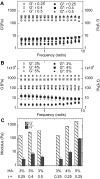Design of cell-matrix interactions in hyaluronic acid hydrogel scaffolds
- PMID: 23899481
- PMCID: PMC3903661
- DOI: 10.1016/j.actbio.2013.07.025
Design of cell-matrix interactions in hyaluronic acid hydrogel scaffolds
Abstract
The design of hyaluronic acid (HA)-based hydrogel scaffolds to elicit highly controlled and tunable cell response and behavior is a major field of interest in developing tissue engineering and regenerative medicine applications. This review will begin with an overview of the biological context of HA, which is needed to better understand how to engineer cell-matrix interactions in the scaffolds via the incorporation of different types of signals in order to direct and control cell behavior. Specifically, recent methods of incorporating various bioactive, mechanical and spatial signals are reviewed, as well as novel HA modifications and crosslinking schemes with a focus on specificity.
Keywords: Hyaluronic acid; Hydrogel; Scaffold; Tissue engineering.
Copyright © 2013 Acta Materialia Inc. Published by Elsevier Ltd. All rights reserved.
Figures









References
-
- Kurisawa M, Chung JE, Yang YY, Gao SJ, Uyama H. Injectable biodegradable hydrogels composed of hyaluronic acid-tyramine conjugates for drug delivery and tissue engineering. Chem Commun (Camb) 2005:4312–4. - PubMed
-
- Meyer K, Palmer JW. The polysaccharide of the vitreous humor. Journal of Biological Chemistry. 1934;107:629–34.
Publication types
MeSH terms
Substances
Grants and funding
LinkOut - more resources
Full Text Sources
Other Literature Sources

